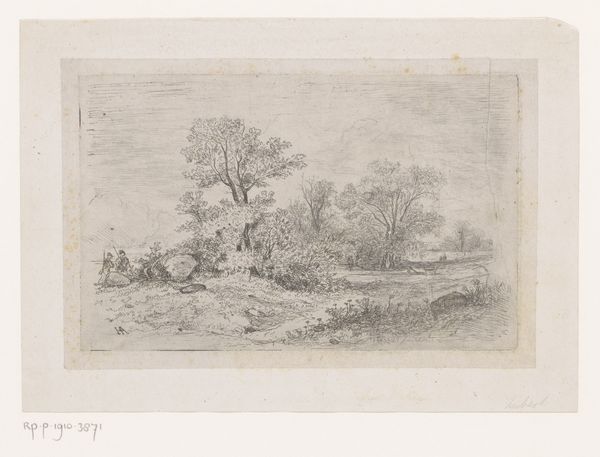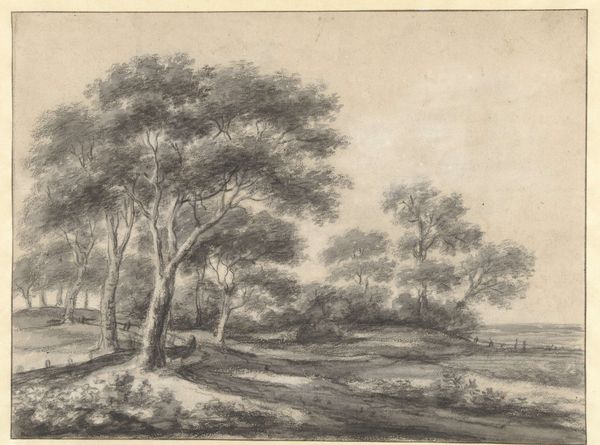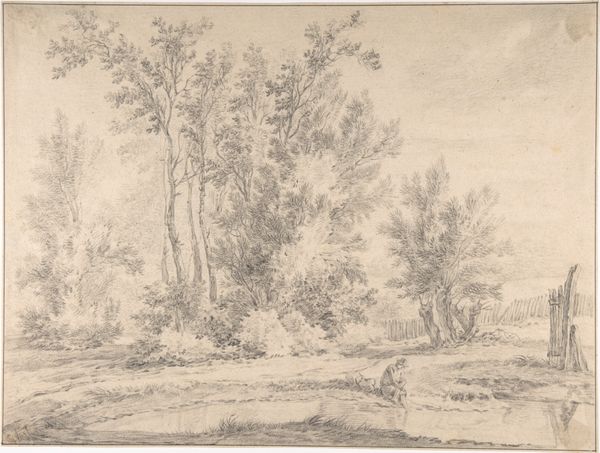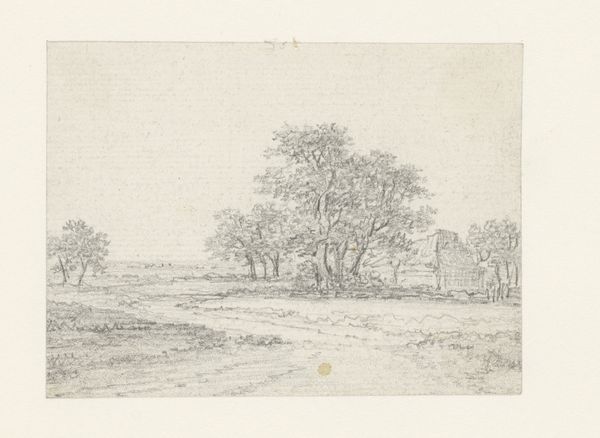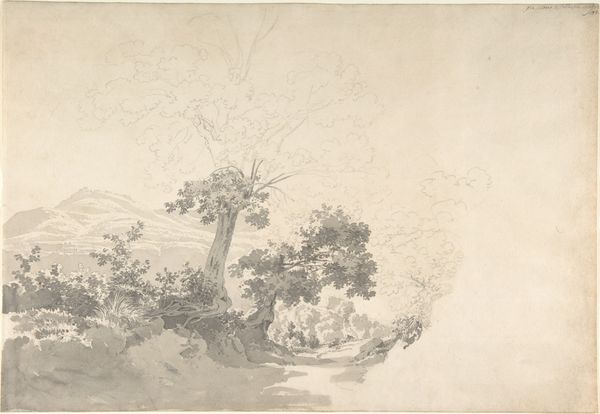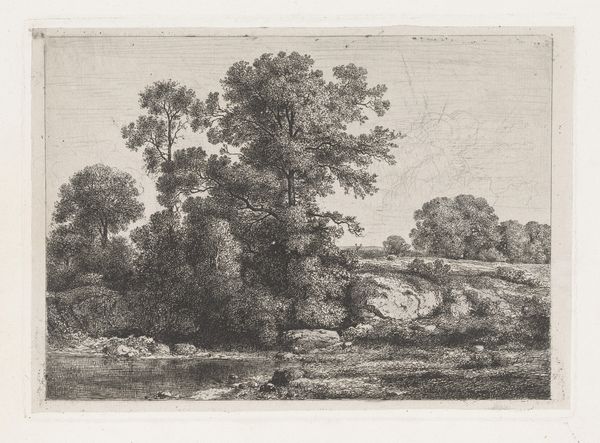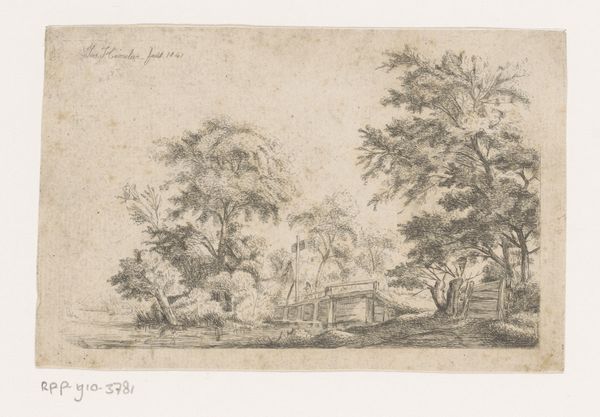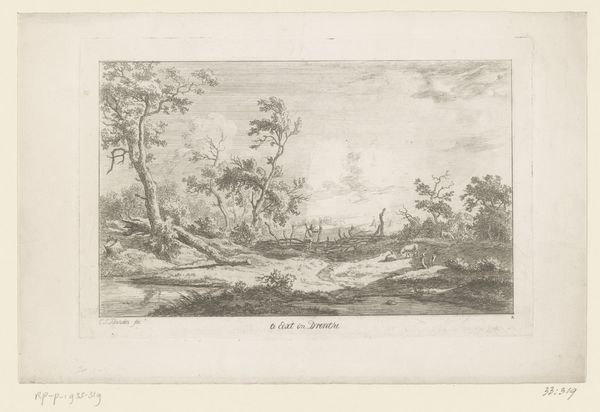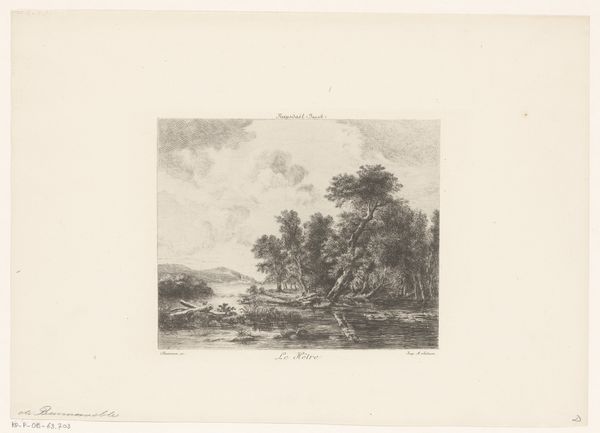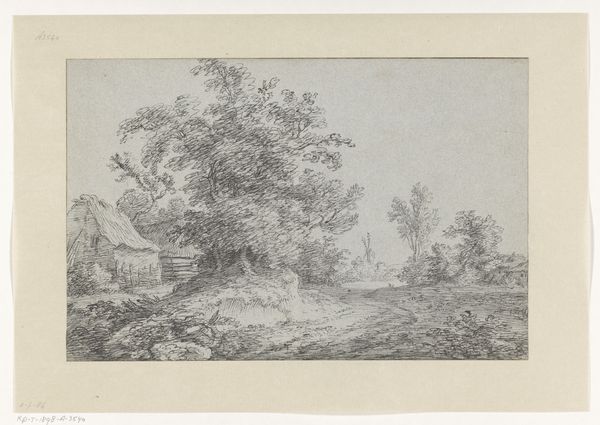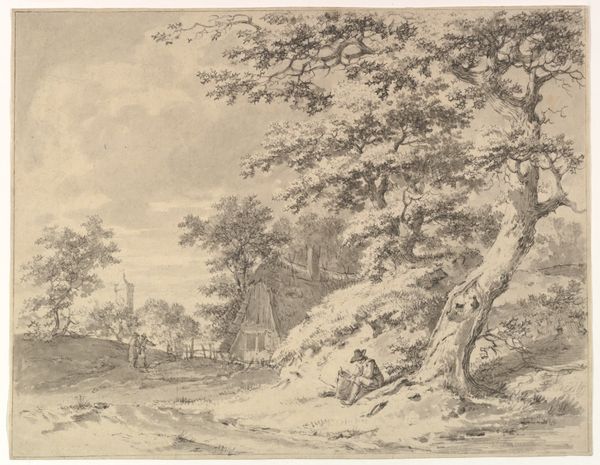
Dimensions: height 182 mm, width 225 mm
Copyright: Rijks Museum: Open Domain
Editor: Here we have "Landscape with Wooden Bridge Over the Water," an etching by Ildephonse Stocquart, dating from 1829 to 1879. It's a delicate, almost dreamlike scene. What stands out to you in its composition? Curator: The immediate observation is the pronounced contrast. The bridge, slightly left of center, cleaves the image, setting a tonal separation. Note how the darker etched lines on the right, creating volume through density, counter the more diffused, airy textures on the left bank. The focal tree acts as a bridge between them, its intricate branching echoing the detailed linework throughout. Editor: I see what you mean about the contrast. Does the placement of the bridge suggest anything about the artist's intent? Curator: Consider how the bridge functions compositionally. Its simple, almost skeletal form provides a crucial orthogonal, a perpendicular line which, along with the river’s implied recession, draws the viewer's eye deeper into the landscape. This carefully orchestrated perspective encourages a sustained visual journey through the image. Observe too, how the figures upon the bridge reinforce that orthogononal plane, though remain nearly indistinct within the etching. Editor: So, it's not just about depicting a landscape, but also about guiding the viewer's eye and structuring the space within the frame. It's fascinating how much is communicated through these formal elements! Curator: Precisely. Every stroke, every void, plays a deliberate role in constructing a self-contained, visually engaging world. The interplay of light and shadow, the balance of textures, these are the building blocks of the artwork's meaning. This understanding allows us to truly 'see' beyond mere representation. Editor: This has really shifted my perspective; now I see how everything – the lines, the composition, and light—contributes to the totality of the art object!
Comments
No comments
Be the first to comment and join the conversation on the ultimate creative platform.


